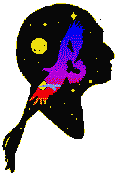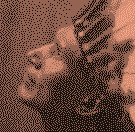

Ohiyesa (Winner)
Wahpeton Dakota
| Charles A. Eastman, Ohiyesa (Winner), Wahpeton Dakota (Eastern Woodland Sioux), 1858-1939. Physician, autobiographer, legend re-teller, essayist, lecturer. |
|---|
|
Charles Alexander Eastman is unique among Indian writers, whether storytellers or oral historians. He was raised traditionally, as a Woodland Sioux, by his grandmother, from 1858 - 1874, until he was 15. He thus gained a thorough first-hand knowledge of the lifeways, language, culture, and oral history. His father (thought to have been hanged at Mankato, Minnesota) reappeared and insisted he receive the white man's education, Educated at Dartmouth and Boston University medical school, Eastman became a highly literate physician, who was the only doctor available to the victims of the Wounded Knee massacre in 1890 -- a major historical event, often described as "ending the Indian wars". Other Indian writers of this period were either entirely acculturated -- had never lived the traditional life of their people or been educated out of their native knowledge -- or were not literate, and were able to provide only "as told to" materials, through the filters of interpreters and non-Indian writers. Eastman had the lifeways and historical events experiences, and he did not need the literary filters of translators and white anthropologists or collectors. Ohiyesa was first named Hakadah (the Pitiful Last One), because his mother died shortly after his brith, somewhere near Redwood Falls, in southwestern Minnesota, in 1858. His first volume of memoirs -- depicting his traditional life, raised by his Wahpeton grandmother -- does not make it clear that almost all this boyhood took place in Manitoba, Canada, after the band had fled U.S. Army and bounty-hunters, following the defeat of the Dakota uprising in Minnesota, in 1862.
Uncheeda (Ohiyesa's grandmother) and several of his siblings lived in Manitoba, with other Minnesota Dakota refugees, from 1862 - 74 on the land of his uncle, Mysterious Medicine, who had a farm in wooded country in Manitoba, Canada. Thus most of the experiences he recounts of his traditional boyhood, his religious upbringing, the tales he heard, the ceremonies and festivals, actually occurred among the Minnesota Dakota exiles in Canada. Ohiyesa spent 11 of th 15 years of his traditional life there, mostly in Manitoba. Permanent land -- reserves -- was mostly allocated by the Canadian government to the Minnesota exiles further west in th Treaty 6 area, Wahpeton District. Sioux Valley, Griswold, Manitoba, is also a Dakota Reserve. In the U.S., the largst Dakota rservation is Sisseton-Wahpeton, which stradles the North - South Dakota state line just west of the Minnesota border. Many captive exiled Minnesota Dakota were also force-marched to what became the Crow Creek reservation in central South Dakota; others to the Santee reservation on the southern border of South Dakota and into Nebraska. Small numbers of Dakota also live on the 4 very small reservations strung across southern Minnesota. Ohiyesa's father, Many Lightnings, was one of the warriors captured and among the more than 300 sentenced to be hanged. The surviving family did not realize he had been among the group pardoned (partially) by President Lincoln, and imprisoned in Davenport, Iowa, for 12 years. When he arrived at Mysterious Medicine's farm, he had converted to Christianity during his years in federal prison. He took Ohiyesa with him, to settrle near Flandreau, North Dakota, where a number of Christianized Dakota had homesteaded farms, and Ohiyesa was baptized, given the name Charls Alexander astman, and entered the Flandreau Santee Normal Indian school, run by the Presbyterian missionary Joseph Riggs. Eastman won a college scholarship to Beloit preparatory College (Wisconsin), but soon moved on to the more demanding Knox College (helped by Riggs, a Knox alumnus). He wantd to find a way of earning a living which would also benefit his people, settling on medicine as offering "the bst way to be of service to my race." He transferred to Dartmouth, and had to make up about 2 years of academic work bfore he could enroll in the freshman Latin Scientific (pre-medicine) courses. Premed study required coursework in Latin, Greek, German, French, zoology, botany, physics, chemistry, natural history, natural philosophy, and a lot of math. astman still found time to go out for sports. He was captain of the football team, set an all-college ecord for long-distance running, and also played on the tennis, boxing, and baseball teams. He met many prominent Boston intellectuals, among them Frank Wood (who was a leading organizer attempting to reform the Indian Bureau). Wood helped him get the financial support he needed to attend Boston University Medical School. Upon graduation as an MD, in June, 1890, he was electd by his class to deliver the graduation address. His first job was as physician for the Pine Ridge, South Dakota, Indian agency. There he met and fell in love with Elaine Goodale, whose writings on Indian education had impressed him previously, who was newly-appointed supervisor of Indian education for North and South Dakota. Goodale spoke excellent Lakota (a different dialect than the Dakota that Eastman had nearly forgotten) and had quickly become close to a number of Indian women. The Ghost Dance, a religious attempt to reverse the destruction of the Plains Indians, had come to be fervidly practiced in the Dakotas. Though it stressed peace and non-violent dance, vision, and prayer, it was banned by the government in November of 1890. One band, Minneconjou Lakota led by BigFoot, was on its way to the Pine Ridge agency to surrender at the end of December, 1890. Eastman protested to his supervisor Daniel Royer the sending of the 7th Cavalry to arrest and disarm the band before it reached the agency. The 7th Cavalry -- numbering 500 men, armed with early versions of the machine gun -- carried out a brutal massacre in a dale known as Wounded Knee, hunting down fleeing women and children where they had hidden in ravines. BigFoot's band had consisted of a total of 350 people, about 230 of whom were women and children. The brutal massacre left 150 dead and 44 badly injured. As a blizzard blew up, the 7th Cavalry returned to the agency, bringing in about a dozen wounded. They were left in wagons in the freezing blizzard while Eastman and Goodale fought to have them allowed into the reservation church, protected from the cold and treated. Eastman and Elaine Goodale spent most of the night treating these wounded. In the morning, they organized a rescue party, who made the 18 mile trip to Wounded Knee on horseback through a driving blizzard. They found heaps of grotesquely contorted, frozen dead, and others strung out across the prairie for miles. "It took all my nerve to keep my composure in the face of this spectacle, and of the excitement and grief of my Indian companions, nearly every one of whom was crying aloud or singing his death song," Eastman wrote later. Astonishingly, there were a few survivors -- an old blind woman, and a tiny baby. (Her sad history and exploited life is told in Lost Bird of Wounded Knee.) Eastman was in immediate conflict with his BIA superiors. He was excpected to side with white policy on all matters, and after Wounded Knee, could not do so. For example, he observed and protested corruption and thievery of reparation monies ordered paid to "non-hostile Sioux" for death, injury, property thefts. He complained that government investigations both of the brutal massacre and of corruption were coverups, whitewashes. Before the year was out -- the year he had married Elaine Goodale, and they had had a child -- he was fired.In 1892, the Eastmans decided to settle in St. Paul, Minnesota. Dr. Eastman had no difficulty passing the Minnesota licensing examination and received a valid license to practice medicine. However, he was cosntantly harassed and charged (in court, by police) with conducting an illegal practice. The authorities -- and other physicians -- were unwilling to believe that an Indian could possibly be t4chnically qualified. Initially, Eastman was determined not to give in to this racism, but his family -- 2 years later there was another child -- needed to eat. So Eastman took a job organizing programs for the YMCA on Indian reservations. The $2,000 salary was good, but h had to travel a lot, and couldn't be with his family. The job made no use of his education as a doctor. In 1899, he worked for a year at Carlisle Indian school (there meeting Zitkala-Sha, who in later correspondence encouragd him to write). In 1900, he got a job as physician to the Crow Creek Agency in South Dakota (where many Minnesota exiles had been marched to). He was quite successful in persduading suspicious Indians to get vaccinatd -- and the result was very low rate of some of the more devastating diseases. But in 1901 he was fired again -- this time for helping Crow Creek Indians make complaints against government policies. The BIA said that his tis to Indian people prevented him from doing his job. He was put in charge of a program to give the Sioux English names -- alledly necessary for them to get citizenship (which Eastman favored). During this period, he began to write. His goal was to achieve understanding and sympathy for Indian culture, which he believed would lead to white society treating Indians with respect, instead of the way they were. Bibliography
Purchase books by Charles Eastman that are still in print. |
|---|
Navigation Buttons
Page |
Menu |
Menu |
MENU |
|---|
|
Page prepared by Paula Giese graphics, layout, text copyright 1996 |
|---|
 This 19th-century ink drawing
This 19th-century ink drawing